1.
Beech Milkcap (
Lactarius blennius).
-
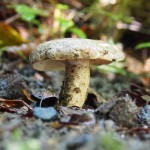
- 1. Beech Milkcap
-
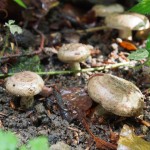
- 1. Beech Milkcap
-
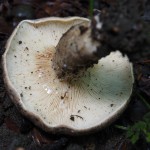
- 1. Beech Milkcap
-
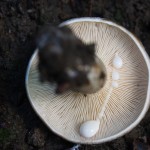
- 1. Beech Milkcap
-
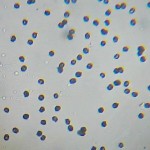
- 1. Beech Milkcap
Growing on on earth bank near beech tree. Troop of more than six. Cap 2.5-6.5cm. Smell none, but perhaps slightly mushroomy. Milk nutty at first then after 10 seconds hot and acrid and taste persisting. Sporeprint White, but perhaps very pale cream. Spores 6.5-8µ x 5.5-7µ.
2.
The Miller (
Clitopilus prunulus).
-
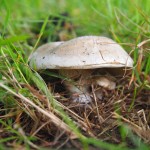
- 2. The Miller
-
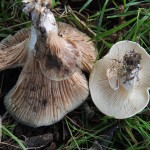
- 2. The Miller
-
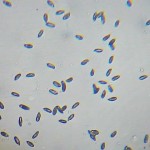
- 2. The Miller
Growing in grass near various broad leaved trees. Small group, with clusters of two. Cap 4-8cm. Smell faint, perhaps fruit/apple. Very decurrent gills. Smell is not quite right for The Miller, but the other details are largely correct so seems likely. ID is guess. Sporeprint Pink. Spores 8-11.5µ x 3.5-4.5µ.
3.
Suede Bolete (
Boletus subtomentosus).
-
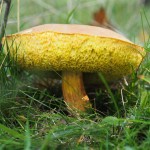
- 3. Suede Bolete
-
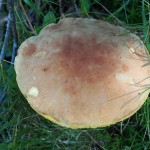
- 3. Suede Bolete
-
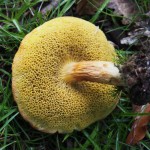
- 3. Suede Bolete
-
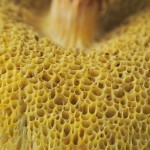
- 3. Suede Bolete
-
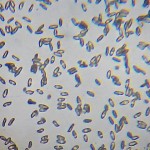
- 3. Suede Bolete
Growing in moss beside sweet chestnut sapling near large oak tree. Two. Cap 5-8cm, stem up to 5cm. No smell. Identification is partly based on spores being the right size. ID is very likely. Sporeprint Olivaceous, but not enough to be sure. Spores 8-11.5µ x 4-5µ.
4.
Stinking Dapperling (
Lepiota cristata).
-
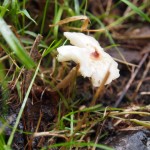
- 4. Stinking Dapperling
-
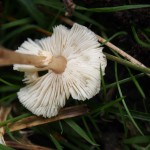
- 4. Stinking Dapperling
-

- 4. Stinking Dapperling
-
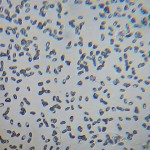
- 4. Stinking Dapperling
Growing in earth amongst grass and woody debris. One. cap 2.5cm, stem 4cm. strong musty smell. ID is almost sure. Sporeprint White. Spores 5-6.5µ x 2.5-4µ.
5. Unidentified.
-
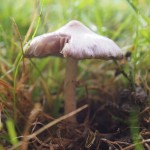
- 5. Unidentified
-
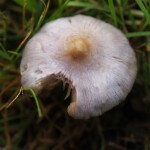
- 5. Unidentified
-

- 5. Unidentified
-
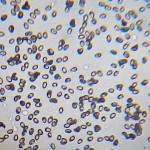
- 5. Unidentified
Growing in mud amongst grass. One. Cap 3.5cm, stem 4cm. No smell. Sporeprint Brownish but not enough to properly determine. Spores 6-8µ x 4-6µ.
6.
Purple Russula (
Russula atropurpurea).
-
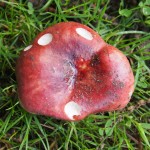
- 6. Purple Russula
-
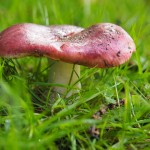
- 6. Purple Russula
-

- 6. Purple Russula
-
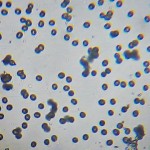
- 6. Purple Russula
Growing under sweet chestnut. Three scattered. Cap 3-7cm. No smell. ID is very likely. Sporeprint Very pale cream - almost white. Spores 6.5-8µ x 5.5-7.5µ.
7.
Artists Fungus (
Ganoderma applanatum).
-
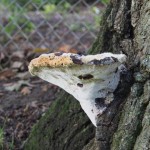
- 7. Artists Fungus
-
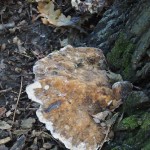
- 7. Artists Fungus
-
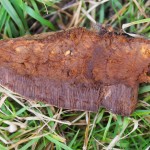
- 7. Artists Fungus
-
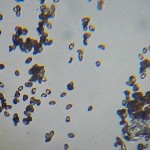
- 7. Artists Fungus
Growing at the base of a healthy looking oak tree. Two or three. Bracket 24cm across, tubes about 1cm long. Smell mushroomy but somewhat sweet/sickly. ID is best guess. Spores 6.5-8µ x 4-5.5µ.
8.
Chicken-of-the-Woods (
Laetiporus sulphureus).
-
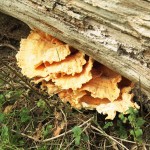
- 8. Chicken-of-the-Woods
Growing on old fallen trunk. A very yellow specimen.
9. Unidentified.
-
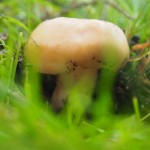
- 9. Unidentified
-
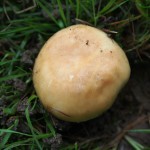
- 9. Unidentified
-
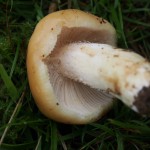
- 9. Unidentified
-
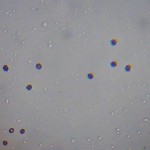
- 9. Unidentified
Growing in grass a fair distance away from sweet chestnuts. One. cap 3.5cm, stem 3cm. No smell. Could be a type of waxcap but difficult to tell when there's only one. Spores 5.5-7.5µ x 5-6.5µ.
10. Unidentified.
-
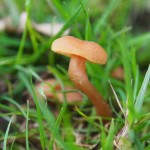
- 10. Unidentified
-
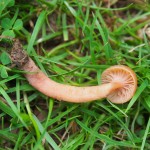
- 10. Unidentified
-
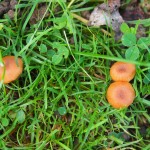
- 10. Unidentified
-
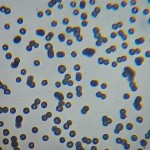
- 10. Unidentified
Growing in grass. Several scattered in patch of ground about 2m across. Cap 1-1.5cm, stem 3cm. Faint mushroom smell. Could be a type of waxcap but cannot find one that fits. Sporeprint White. Spores 6.5-8.5µ x 5.5-8µ.
11. Unidentified.
-
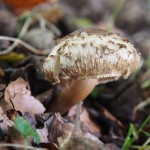
- 11. Unidentified
-
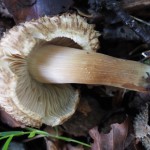
- 11. Unidentified
-
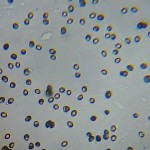
- 11. Unidentified
Growing amongst beech masts under beech tree. Two. Cap 3-4cm, stem 5cm. Unpleasant smell, perhaps of paint/chemical. Probably a type of fibrecap, as some of those smell of bleach, but fibrillous cap with smooth stem is an unusual combination. Sporeprint brownish. not enough to be sure. Spores 5.5-8µ x 5-7µ.
12. Unidentified.
-
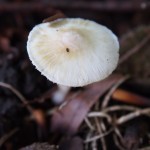
- 12. Unidentified
-

- 12. Unidentified
-
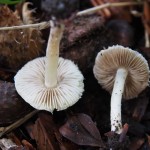
- 12. Unidentified
-
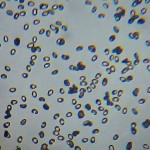
- 12. Unidentified
Growing amongst beech masts under beech tree. Several scattered around. Cap 1.5-2cm, stem 2-3cm. No smell. Prominent umbo, tough stem. Sporeprint brownish, not enough to be sure. Spores 7-8.5µ x 4.5-6µ.
13.
Russula graveolens.
-
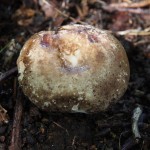
- 13. Russula graveolens
-
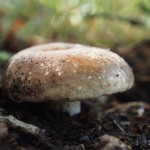
- 13. Russula graveolens
-
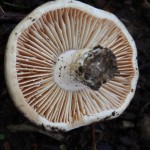
- 13. Russula graveolens
-
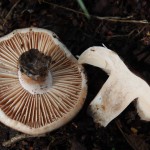
- 13. Russula graveolens
-
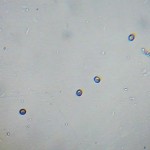
- 13. Russula graveolens
Growing under oak. Several scattered around. Cap 4-6cm, short stem around 2cm. No smell. ID is fairly likely. Spores 7-8µ x 6.5-7µ.
14.
Amanita franchetii.
-
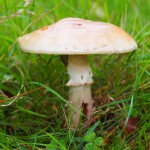
- 14. Amanita franchetii
-
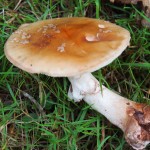
- 14. Amanita franchetii
-
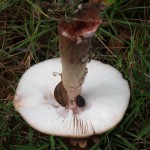
- 14. Amanita franchetii
-
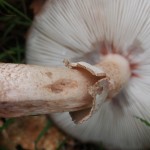
- 14. Amanita franchetii
-
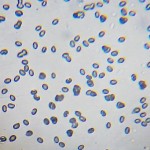
- 14. Amanita franchetii
Growing in grass in clearing between oak trees. Two. Cap 6.5-8cm, stem 7-8cm. No smell. Bulb at base of stem. Id is somewhat uncertain since A. franchetti is rare and it could be a Blusher, although it doesn't look like one. ID is fairly likely. Sporeprint white. Spores 7-8.5µ x 4.5-6µ.
15.
Golden Spindles (
Clavulinopsis fusiformis).
-
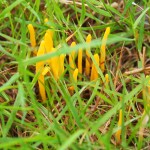
- 15. Golden Spindles
-
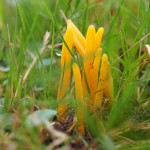
- 15. Golden Spindles
Scattered through grass. Several small clusters. Look young and not fully developed compared to the find nearby last year.
16.
Willow Shield (
Pluteus salicinus).
-
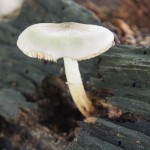
- 16. Willow Shield
-
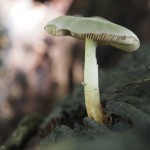
- 16. Willow Shield
-
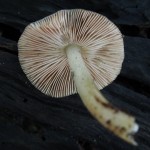
- 16. Willow Shield
-
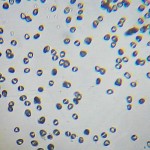
- 16. Willow Shield
Growing on rotting trunk, perhaps of sweet chestnut. One. Cap 4cm. No smell. ID is almost sure. Sporeprint pinkish beige. Spores 6.5-8µ x 5-7µ.
17.
Deathcap (
Amanita phalloides).
-
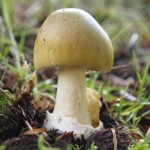
- 17. Deathcap
-
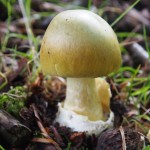
- 17. Deathcap
-
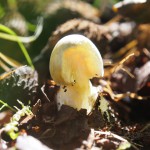
- 17. Deathcap
-
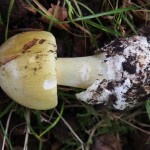
- 17. Deathcap
-
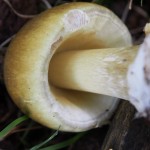
- 17. Deathcap
-
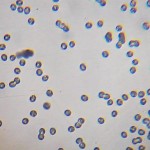
- 17. Deathcap
Growing under beech. Two - one tiny and one larger. Larger one: cap 4cm across, 6cm high. Tiny one: cap 1.5cm. Smell mushroomy. Immature specimens. Sporeprint white. Spores 7-8.5µ x 6-7.5µ.
18.
White Coral (
Clavulina cinerea).
-
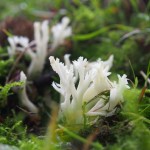
- 18. White Coral
-
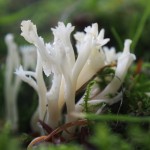
- 18. White Coral
-
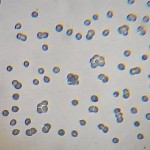
- 18. White Coral
Growing in moss under beech tree. A few small clusters. Branches about 3cm high. Smell earthy. Sporeprint Whitish, not enough to be sure. Spores 7-9µ x 6-7.5µ.
19.
Inocybe assimilata.
-

- 19. Inocybe assimilata
-
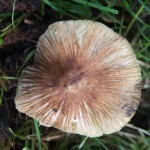
- 19. Inocybe assimilata
-
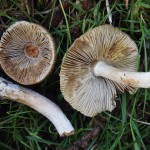
- 19. Inocybe assimilata
-
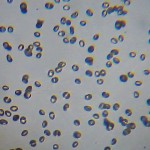
- 19. Inocybe assimilata
Growing in grass near sweet chestnut tree. Three. Cap 4-4.5cm fully expanded. No smell. ID is very likely. Sporeprint Greyish leather brown. Spores 7-9.5µ x 5.5-7.5µ.
20.
Hebeloma laterinum.
-
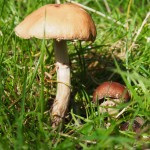
- 20. Hebeloma laterinum
-
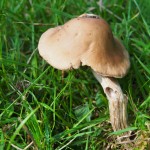
- 20. Hebeloma laterinum
-
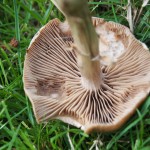
- 20. Hebeloma laterinum
-
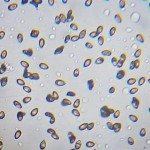
- 20. Hebeloma laterinum
Growing in grass. Three. Cap 5-6cm, stem 6-8cm. Smell faint and mushroomy. Stem quite brittle. Could easily be another type of Hebeloma but H. laterinum is most likely as the others generally smell of radishes. ID is best guess. Sporeprint dark grey brown. Spores 9-12µ x 5.5-7µ.
21.
Agaricus porphyrocephalus.
-
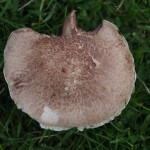
- 21. Agaricus porphyrocephalus
-
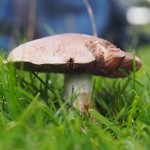
- 21. Agaricus porphyrocephalus
-
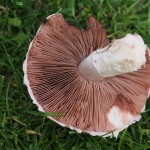
- 21. Agaricus porphyrocephalus
-
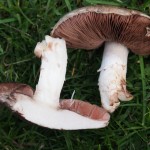
- 21. Agaricus porphyrocephalus
-
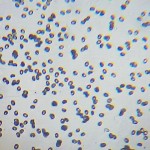
- 21. Agaricus porphyrocephalus
Growing in grass. Only one but another found 500 metres away. Cap 6.5cm. Smell slight and mushroomy. Very brittle stem. Could be another type of Agaricus (Field Mushroom or A. bresadolanus) but spore size is right for it to be A. porphyrocephalus. ID is guess. Sporeprint Dark brown. Spores 5-6.5µ x 3.5-4.5µ.
22.
Charcoal Burner (
Russula cyanoxantha).
-
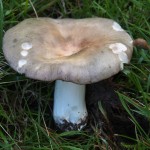
- 22. Charcoal Burner
-
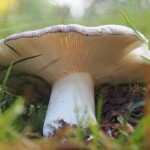
- 22. Charcoal Burner
-
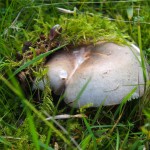
- 22. Charcoal Burner
-
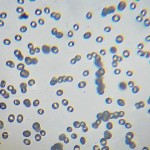
- 22. Charcoal Burner
Growing under beech. Two. Cap 9-10cm. No smell. ID is very likely. Sporeprint white. Spores 6.5-9.5µ x 5.5-7.5µ.
23.
Oldrose Bolete (
Boletus rhodopurpureus).
-
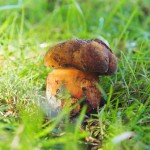
- 23. Oldrose Bolete
-
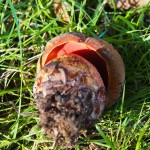
- 23. Oldrose Bolete
-
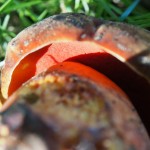
- 23. Oldrose Bolete
-
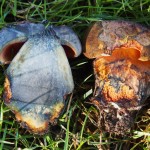
- 23. Oldrose Bolete
Growing near oak tree. One. Cap 4.5cm. Perhaps faintly mushroomy. Looks like an immature specimen. Very fat stem. Difficult to identify with just one. Alternatively could be a Scarletina Bolete as I've found those in Knole before. ID is fairly likely.
24.
Parasol (
Macrolepiota procera).
-
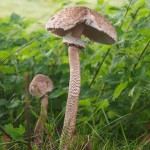
- 24. Parasol
-
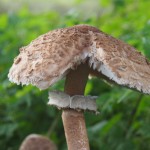
- 24. Parasol
-

- 24. Parasol
Growing close to oak tree. A few scattered around. Cap 12cm (not fully open), 30cm total height. The tallest Parasol that I've ever found. Sporeprint white. Spores 12-13.5µ x 8-10.5µ.






























































































